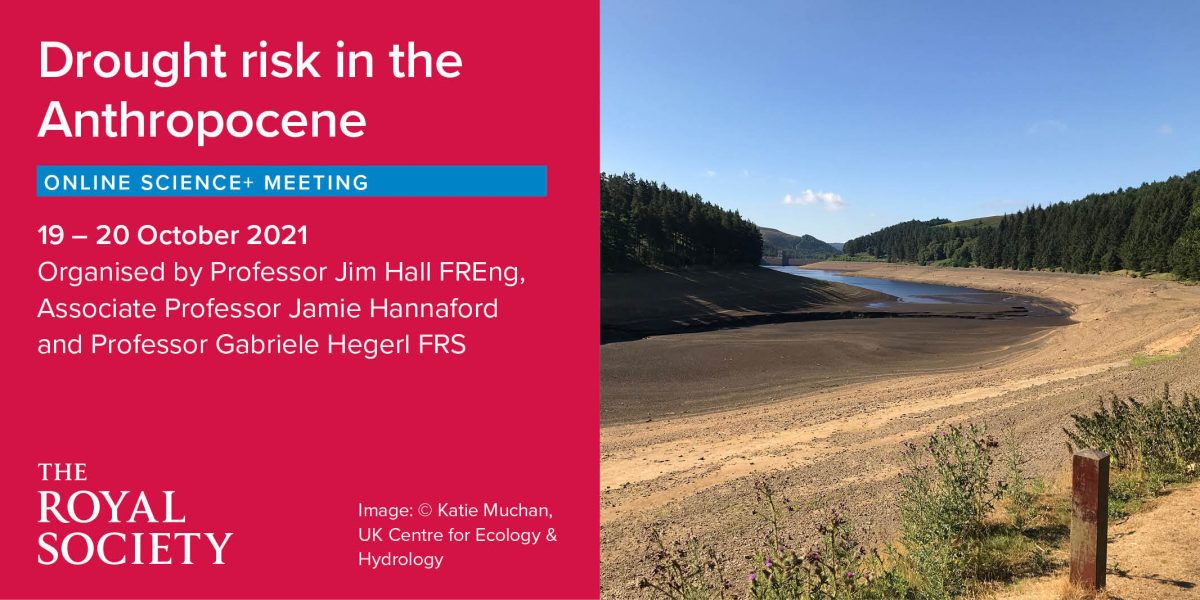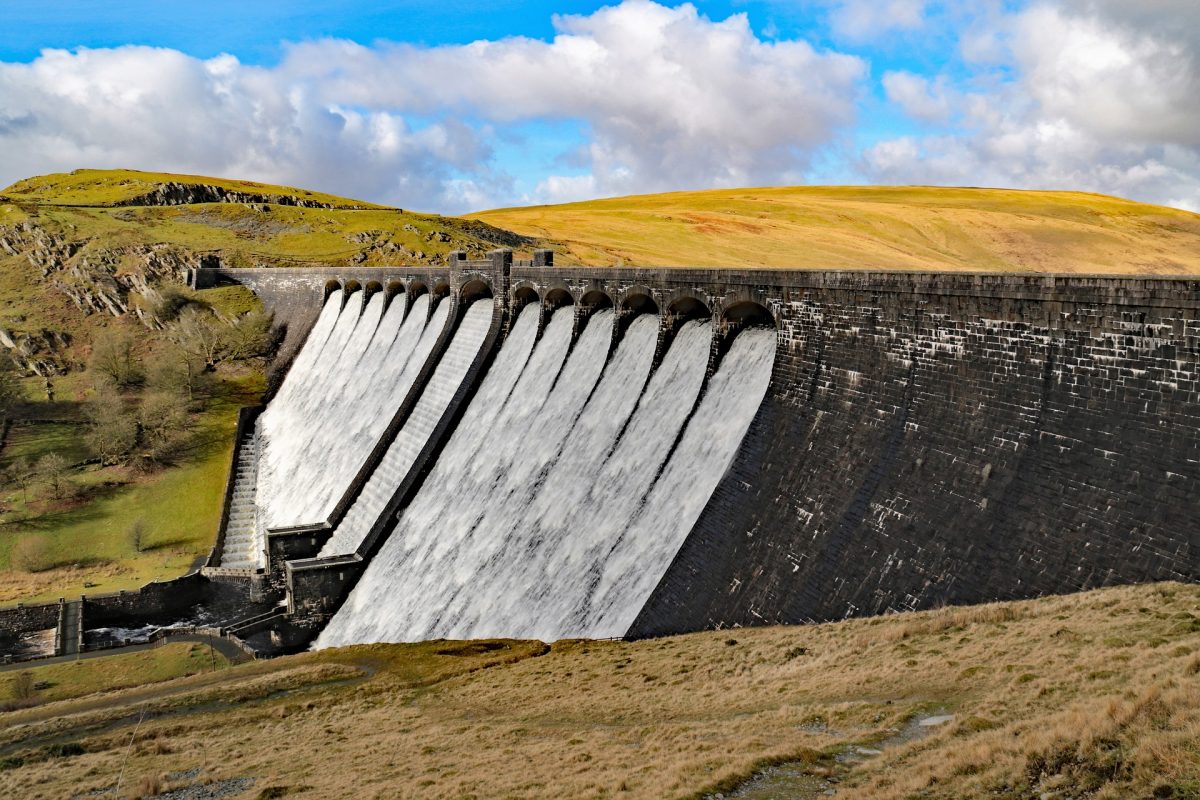Dr Jade Ward has recently finished an Academic Fellowship at the UK Parliamentary Office of Science and Technology (POST) writing a POSTbrief on water supply resilience and climate change in England. The Fellowship was funded by the UK Droughts and Water Scarcity Research Programme.
POST makes the latest scientific research accessible to parliamentarians through the publication of POSTbriefs and POSTnotes. POST publications are impartial, balanced, peer-reviewed and evidence-based, covering a diverse range of topics that are of interest to policymakers. POST publications are also freely available to the public.
Introduction
The extensive drought of 1976 in the UK is etched in the memory of those who lived through it. For those of us who are too young to remember, the stories of stand-pipes in the street have been recounted many times. But how many people realise that England is heading for more frequent and severe water shortages in the future if no action is taken?
Having completed this Fellowship, I know the answer is, not many.
Water supply resilience and climate change is a vast and diverse topic, as evidenced by the wide-ranging and diverse work and content of About Drought, the UK’s Droughts and Water Scarcity Research Programme, funded by NERC. The POSTbrief I completed explores the drivers of drought and water scarcity, the water resource management framework and options to consider for building resilience into England’s water supply system. Climate change impacts will be similar across the UK, but as the environment is a devolved issue in Parliament, the nations of the UK manage their water resources in different ways. In England, private water companies have been responsible for water supply since privatisation in 1989.
The issues of water resilience and climate change
The public are, in general, unaware of the impending water scarcity crisis that could impact some areas of the UK as soon as the 2040s. Around the world, England is perceived as a place that gets a lot of rain, and it is no secret that everyone rejoices when the sun comes out, but in reality England is facing a water scarcity crisis. In fact, it doesn’t rain as much as you might think, especially in Eastern and Southern areas of the country, and population growth is putting increasing pressure on natural resources and the supply system. Climate change projections forecast hotter, drier summers and warmer, wetter winters in the UK. This increases the chances of extreme drought and flood events. The south east of England, with its high population density and drier climate, is already classed as a water stressed region and is likely to be the first to experience water shortages, but the whole country is at risk.
Over the past couple of decades, evidence for climate change and its impacts on water resources has been building, with researchers, water companies, trade associations, consultancies, non-governmental organisations and governmental departments all producing literature on the topic. The National Audit Office, The Public Accounts Committee and the Climate Change Committee have all given stark warnings about the risk to water supply if we don’t act now. However, to date, little progress has been made in policy to set targets and implement mechanisms to achieve them, from reducing carbon emissions to improving water supply infrastructure and water efficiency. Recent developments include the Environment Bill, the Government’s 25 Year Environment Plan and the legally binding net zero carbon emissions by 2050 but implementation strategies will be key to meeting the targets.
In recent years, the impacts of climate change have become reality, with the UK experiencing more frequent severe flood and drought events. In addition, the COVID-19 pandemic has exposed the vulnerability of many systems, which have struggled to adapt to such an extreme global event. There is a growing understanding that such extreme events do occur, and the consequences are severe if our systems are not resilient. The water supply system suffered from increased demand during the first lockdown in March-July 2020 due to most people spending all their time at home coinciding with hot weather and the sunniest spring on record.
Building resilience in England’s water supply system
There is an established process for water resource management planning, with water companies required to produce 25-year water resource management plans (WRMPs) and revise them every 5 years. Until recently, this process has focussed on individual water companies managing water within their own area. However, the next review of water company plans, due in 2024, requires input from the new national framework for water resources and regional planning groups.
This new approach enables collaboration between regions and water companies, which will be required in the future to minimise the risk of shortages across the country. For example, large-scale inter-regional water transfers could be set up if droughts are forecast to occur at different times in different regions. The regional planning groups facilitate cross-sector collaboration for water resource management for the first time, recognising that the issues of water scarcity would have impacts across society. Water security is closely linked to food and energy security and the wider environment. For example, if ensuring the provision of public water supply led to water shortages for agricultural use this could reduce crop yield with impacts for food security, farming businesses, the food and drink supply chain and ultimately the public. Bringing the stakeholders together ensures that improving resilience in one sector does not leave another more vulnerable. This is called a systems approach, where cross-sector risks and trade-offs are explored under different management scenarios to develop integrated management plans.
Analysis of historic droughts continues to improve our understanding of such events and develop early warning systems for the future. These results can be used to inform the planning process. Going forward, a more integrated approach to modelling the water cycle – from rainfall, river and groundwater flow to water supply distribution systems – would better support the move to a systems approach for water resource management planning. These models would require sufficient data, with the potential to include real-time monitoring data in the future, which would enhance forecasting and decision-making.
Improving water efficiency, by reducing water consumption for individuals and businesses and making our appliances and properties more efficient, would ease demand on water resources. This is likely to require an increased awareness of water consumption rates, as the majority of the public are not aware of how much water they use in a typical day or how much water their appliances use. Effective communication of water scarcity issues and the social, economic and environmental impacts, could help to empower citizens and businesses to be part of the solution.
Working with POST
My work began with a literature review of scientific papers, government reports, POSTnotes and more, to establish the key areas of focus and who I should interview for more information. Interviewing researchers (including the principal investigators and others across the DWS programme), stakeholders, regulators, and government departments is a key part of developing the POSTbrief. I really enjoyed speaking to such a wide range of people with different perspectives. Although I have been working in the water industry for nine years, I learnt a lot about different areas of research. My task was then to put it all together in a coherent, simple, impartial briefing to present an overview of the topic. Once complete, the POSTbrief was sent out to over 30 external reviewers, the majority of whom I had interviewed as part of the process. Their comments were incorporated into the final POSTbrief.
At the beginning of my Fellowship, I completed training in the POST style of writing and then learnt how to put this into practice throughout the editing and internal review process. It was sometimes quite a challenge to reduce such a complex topic into a short summary and make sure the main point is not missed. This is the true art of a POST publication!
Read the POSTbrief in full
Dr Jade Ward



